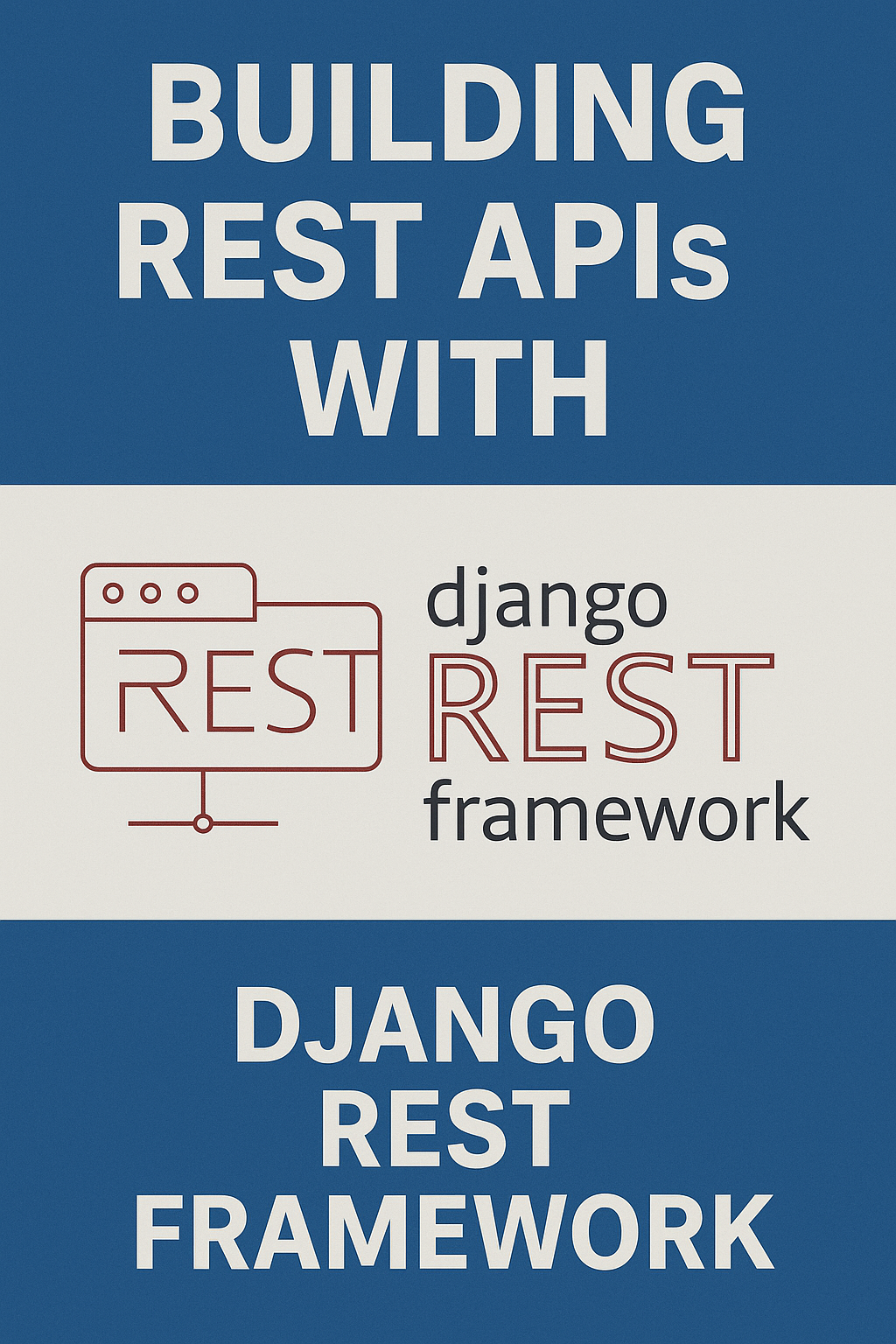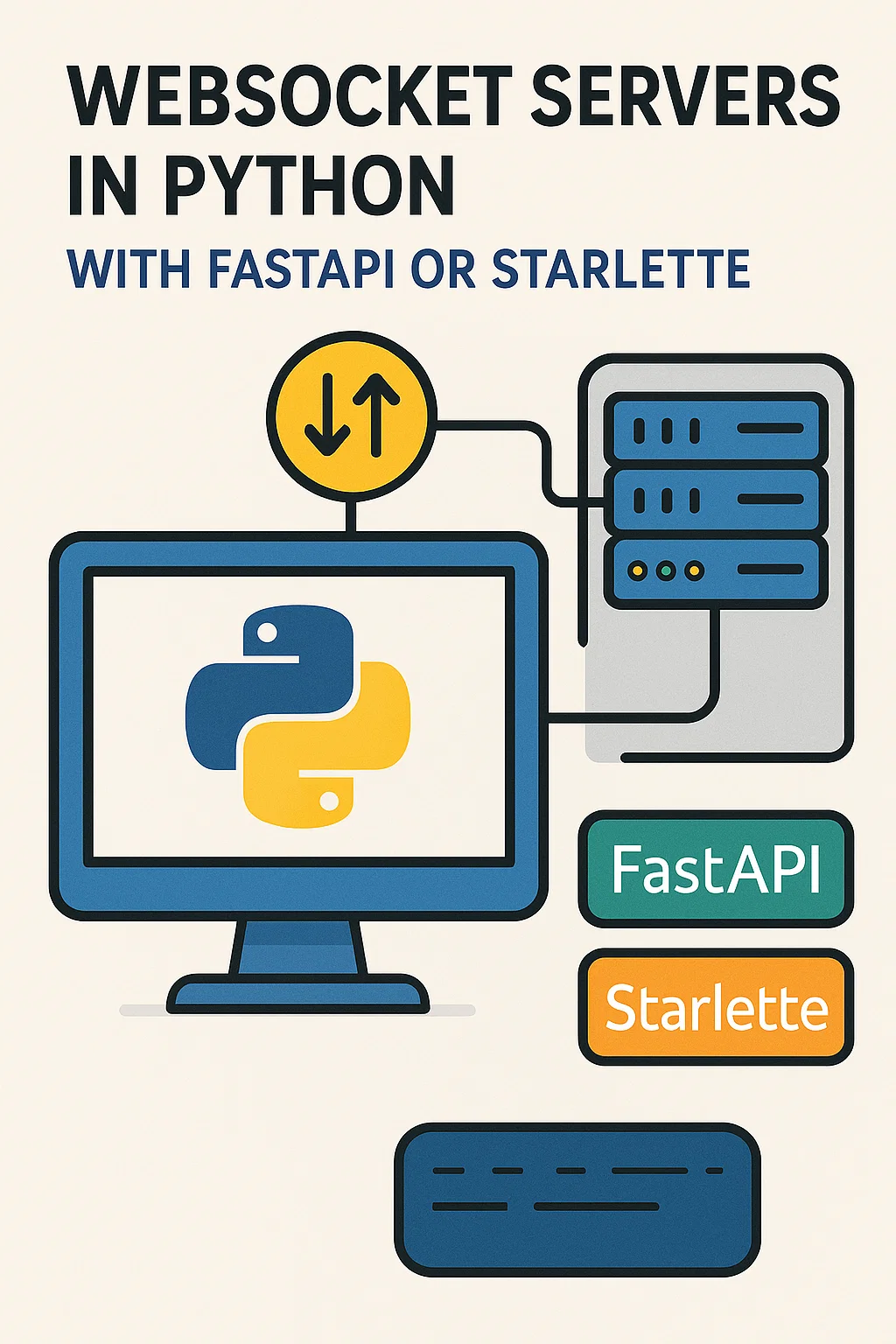
Introduction
Building REST APIs efficiently is a critical skill for modern backend developers. Python’s Django Rest Framework (DRF) makes it easier than ever to create secure, scalable, and maintainable APIs. DRF adds powerful tools—serializers, viewsets, routers, authentication, and permissions—on top of Django’s robust foundation. In this guide, we’ll walk through the core concepts, show practical examples, and help you understand why DRF is one of the most popular API frameworks in the Python ecosystem.
What Is Django Rest Framework?
Django Rest Framework (DRF) is a flexible and feature-rich toolkit for building Web APIs.
It provides:
- Automatic serialization and parsing
- Class-based views and viewsets
- Built-in authentication and permissions
- Browsable API interface
- Easy URL routing
- Excellent documentation DRF is built on Django, so you get the benefits of a full web framework (ORM, middleware, security) combined with API tooling.
Installing Django Rest Framework
Start by installing Django and DRF: bash pip install django djangorestframework
Add DRF to your Django project: python INSTALLED_APPS = [ 'django.contrib.admin', 'django.contrib.auth', 'django.contrib.contenttypes', 'django.contrib.sessions', 'django.contrib.messages', 'django.contrib.staticfiles', 'rest_framework', ]
DRF is now ready to use.
Creating Your First API Endpoint
Let’s build a simple “Article” API.
Step 1: Define a Django Model
from django.db import models
class Article(models.Model):
title = models.CharField(max_length=200)
content = models.TextField()
published = models.DateTimeField(auto_now_add=True)
def __str__(self):
return self.title
Step 2: Create a Serializer
Serializers convert Django models to JSON and back.
from rest_framework import serializers
from .models import Article
class ArticleSerializer(serializers.ModelSerializer):
class Meta:
model = Article
fields = '__all__'
Step 3: Build a Viewset
Viewsets provide CRUD operations automatically.
from rest_framework import viewsets
from .models import Article
from .serializers import ArticleSerializer
class ArticleViewSet(viewsets.ModelViewSet):
queryset = Article.objects.all()
serializer_class = ArticleSerializer
Step 4: Configure URLs with Routers
Routers auto-generate API routes.
from django.urls import path, include
from rest_framework.routers import DefaultRouter
from .views import ArticleViewSet
router = DefaultRouter()
router.register(r'articles', ArticleViewSet)
urlpatterns = [
path('api/', include(router.urls)),
]
Now you have a fully functional CRUD API with almost no boilerplate.
Authentication and Permissions
DRF includes powerful authentication systems:
- Token Authentication
- Session Authentication
- JWT Authentication (via
djangorestframework-simplejwt) - Custom auth backends Example using JWT:
bash pip install djangorestframework-simplejwtpython from rest_framework_simplejwt.views import ( TokenObtainPairView, TokenRefreshView, ) urlpatterns = [ path('api/token/', TokenObtainPairView.as_view()), path('api/token/refresh/', TokenRefreshView.as_view()), ]
You can also enforce permissions: python REST_FRAMEWORK = { 'DEFAULT_PERMISSION_CLASSES': [ 'rest_framework.permissions.IsAuthenticated', ] }
Browsable API Interface
One of DRF’s most beloved features is the Browsable API, a UI that automatically appears during development. It lets you explore endpoints, send requests, and debug easily. This accelerates development and makes onboarding faster.
Pagination, Filtering, and Ordering
DRF provides built-in tools to handle large datasets.
Enable pagination globally: python REST_FRAMEWORK = { 'DEFAULT_PAGINATION_CLASS': 'rest_framework.pagination.PageNumberPagination', 'PAGE_SIZE': 10 }
Add filtering and ordering: python pip install django-filter python REST_FRAMEWORK = { 'DEFAULT_FILTER_BACKENDS': [ 'django_filters.rest_framework.DjangoFilterBackend', 'rest_framework.filters.OrderingFilter', ] }
When Should You Use Django Rest Framework?
DRF is ideal for:
- Full backend systems with databases
- Admin dashboards + APIs
- Mobile app backends
- Multi-tenant SaaS platforms
- Machine learning model endpoints
- Enterprise-grade systems
It is less suitable when:
- You need extremely high-performance async APIs (FastAPI is better)
- You require lightweight microservices DRF prioritizes consistency, reliability, and security, making it excellent for scalable backend systems.
Conclusion
Django Rest Framework remains one of the most powerful and developer-friendly solutions for building REST APIs in Python. Its combination of serializers, viewsets, permissions, routers, and a browsable API creates a productive environment for fast, clean backend development. If you want to explore other backend architectures, read our internal post: How to Build a REST API in Python Using FastAPI. For more async and concurrency concepts, try: Mastering Async/Await in JavaScript: A Beginner-Friendly Guide. For official documentation and best practices, visit Django Rest Framework docs and Django documentation. Choosing DRF provides a strong foundation for secure, maintainable, and scalable web APIs that can grow with your application.


